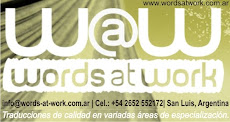Guía Hueney would like to thank ECOCULTURA Association for the award they gave us as “Ciudadano Solidario 2009, en reconocimiento al invalorable aporte que ha prestado a la comunidad de San Luis”, (Supportive Citizen 2009, in recognition for promoting local culture, heritage and development).
This has been a truly satisfactory experience for all those who collaborate with Guía Hueney.
You can browse through Guía Hueney’s previous editions at:
1- Urbano J. Núñez Public Library – Potrero de los Funes
Opening hours: Monday-Friday from 9:00 a.m. to 13:00 p.m.
[i]Remedial lessons: Monday-Friday from 9:00 a.m. to 12:00 p.m. 2- Roque Alberto Orozco Public Library
Located within CANAL 13 (San Luis) precincts
Elijo Potrero, elijo San Luis (I choose Potrero, I choose San Luis)
This is the name chosen for the book whose publication has been proposed by Guía Hueney. The original idea for making this book belongs to Rosario Flores (resident of Potrero de los Funes).
Its main aim is to show the character of Potrero de los Funes by reproducing the testimony of families from other provinces in Argentina who chose to invest and live in this village. The book contains the life stories of these families, as well as the reasons why they chose leaving their past and start a new life in this province. It also gives an account of the tourist attractions that should not be overlooked.
This project has been submitted to the City Council of Potrero de los Funes and to the Ministry of Tourism, Culture and Sports.
El Cacique
This is name given to the rocky formation known as Quebrada de los Cóndores. The petition for making this area a tourist attraction - as well as the project for restoring the Amigo de los Cóndores Association - was submitted to the provincial Ministry of Tourism (File No. 31480/08).
Within the framework of the Plan Maestro de Turismo (Master Tourism Plan), Guía Hueney, together with CAMTUR (Cámara de Turismo de Potrero de los Funes [Potrero de los Funes Chamber of Tourism]) has also submitted the project called “Revalorización de Zonas Naturales como Atractivos Turísticos” (Raising Environmental Awareness of Natural Areas as Tourist Attractions). This Project - which involves Juana Koslay city, Potrero de los Funes, and San Luis Government - has three main objectives:
1- Creating a new Access route to Potrero de los Funes, from Juana Koslay.
2- Improving the routes around the area of Quebrada de los Cóndores, whose big potential as a tourist attraction is nowadays wasted.
3- Promoting sports, recreational and cultural activities in the area.
This Project has been submitted to the Ministry of Tourism, Culture and Sports.
Ecological Park “Las Aromáticas” (Aromatic Plants)
Together with the environmental scientist, Roberto Espinosa, we have submitted a project for creating parks by using a technique unique in our country. The aim of this project is to raise people’s awareness to keep open spaces clean, and to promote the use of aromatic species. We believe this project will be a hallmark for future generations. Likewise, we believe this project may promote the beginning of waste classification as a business, which will be possible thanks to the integration of the community into ecological and development programs.
This Project has been submitted to the City Council of Potrero de los Funes.
Native fauna of San Luis
Together with FOAPRA (Spanish acronym for “Federation of Environmental Organizations and Animal Protection Organisms”), we have organized a series of lectures aimed at spreading the word on the protection of the Pampas deer, which is one of the local endangered species. The series of lectures have been organized within the context of a call to participate in the Annual Program of Bicentenary Celebrations organized by the National University of San Luis.
Guía Hueney, a magazine everyone can be a part of.
[i] N.T: remedial lessons are given to students (both at elementary or high school) when they find it difficult to study a particular subject/topic. This service is often a paid one, but it is offered for free at public libraries and schools.




















